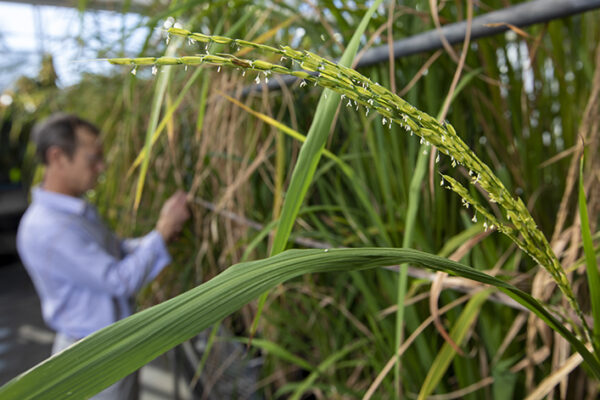Rice, know thy enemy: NSF grants $2.6M to study weedy invader
Weedy rice — or rice gone rogue — costs U.S. farmers more than $45 million annually. A team led by Washington University in St. Louis will characterize the genetic basis and origins of the traits that allow weedy rice to invade rice fields, reduce yields and contaminate harvests.
How rice twice became a crop and twice became a weed — and what it means for the future
With the help of modern genetic technology and the
resources of the International Rice GeneBank, which contains more than
112,000 different types of rice, evolutionary biologist Kenneth Olsen has been able to look back in time at the double domestication of rice (in Asia and in Africa) and its double “de-domestication” to form two weedy strains. Olsen predicts the introduction of pesticide-resistant rice will drive ever faster adaptation in weedy rice.
Traditional Thai hill farmers help preserve genetic diversity of rice
Traditional rice cultivation methods practiced in the isolated hillside farms of Thailand are helping preserve the genetic diversity of rice, one of the world’s most important food crops, according to a new study by researchers at Washington University in St. Louis and Chiang Mai University in Thailand.
Technology identified could reduce the spread of rice virus
National Science FoundationBuilding on plant virus research started more than 20 years ago, a biologist at Washington University in St. Louis and his colleague at the Donald Danforth Plant Science Center in St. Louis have discovered a technology that reduces infection by the virus that causes Rice Tungro Disease, a serious limiting factor for rice production in Asia.
Plant biologist seeks molecular differences between rice and its mimic
Photo by David Kilper / WUSTL PhotoKenneth Olsen, Ph.D., assistant professor of biology in Arts & Sciences, examines a cultivated rice plant in the Goldfarb Greenhouse.Red rice sounds like a New Orleans dish or a San Francisco treat. But it’s a weed, the biggest nuisance to American rice growers, who are the fourth largest exporters of rice in the world. And rice farmers hate the pest, which, if harvested along with domesticated rice, reduces marketability and contaminates seed stocks. Complicating matters is the fact that red rice and cultivated rice are exactly the same species, so an herbicide cannot be developed that seeks out only red rice. It would kill cultivated rice, too. But now a plant evolutionary biologist at Washington University in St. Louis has been funded by the National Science Foundation (NSF) at $1.12 million for two years to perform genetic studies on red rice to understand molecular differences between the two that someday could provide the basis for a plan to eradicate the weed. More…
Rice domestiction confiirmed genetically
Photo courtesy USDASchaal rice one.Biologists from Washington University in St. Louis and their collaborators from Taiwan have examined the DNA sequence family tree of rice varieties and have determined that the crop was domesticated independently at least twice in various Asian locales. Jason Londo, Washington University in Arts & Sciences biology doctoral candidate, and his adviser, Barbara A. Schaal, Ph.D., Washington University Spencer T. Olin Professor of Biology in Arts & Sciences, ran genetic tests of more than 300 types of rice, including both wild and domesticated, and found genetic markers that reveal the two major rice types grown today were first grown by humans in India and Myanmar and Thailand (Oryza sativa indica) and in areas in southern China (Oryza sativa japonica). More…

